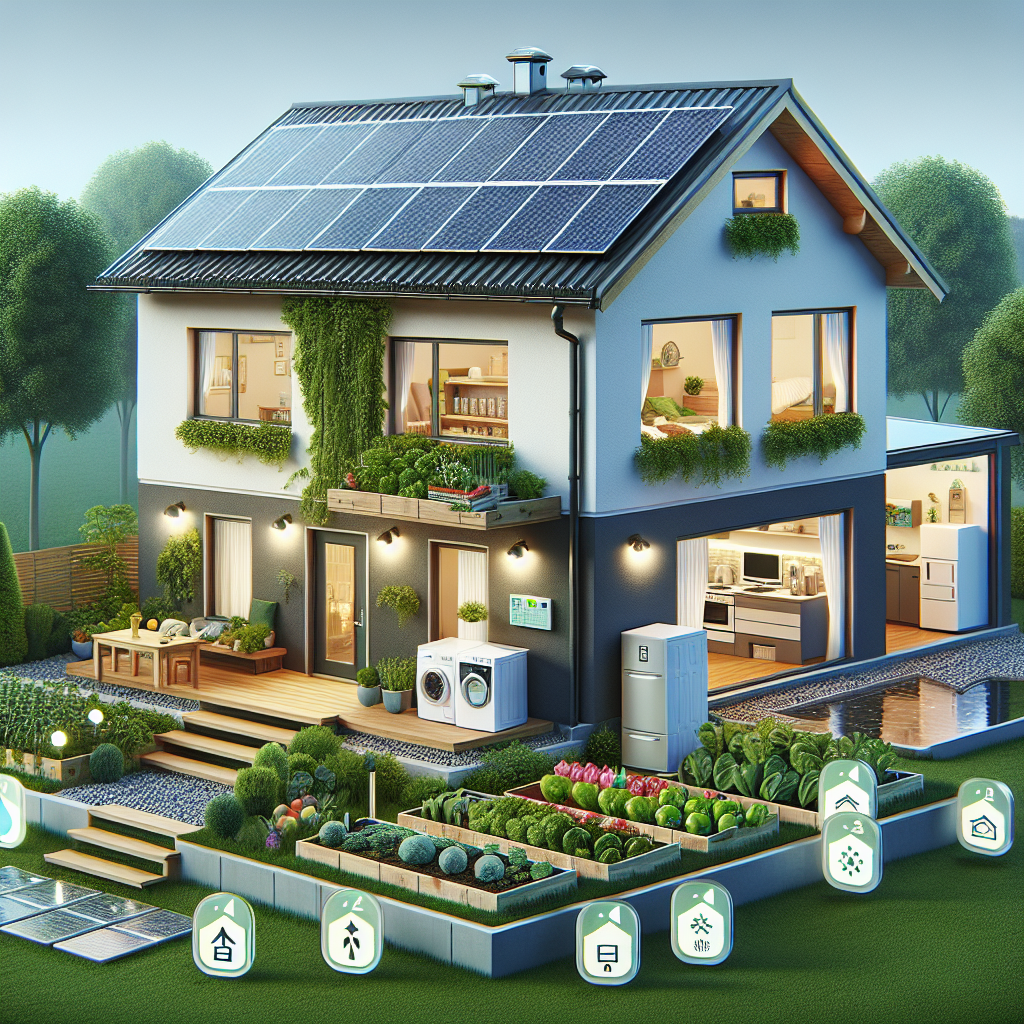Ever glanced at your utility bill and felt that familiar pang of shock? You’re not alone. As energy costs continue to rise, many homeowners find themselves caught between wanting to reduce their environmental footprint and needing to protect their financial bottom line. Smart energy efficiency isn’t about expensive renovations—it’s about making thoughtful choices that deliver real savings. The good news? Creating an energy-efficient home doesn’t require taking out a second mortgage or investing in cutting-edge technology. With some strategic adjustments and mindful habits, you can significantly reduce your energy consumption while keeping your wallet intact. These practical solutions work for any home, whether you’re a homeowner or renter, living in a spacious house or cozy apartment.
I stood in my living room last winter, wrapped in two sweaters and still shivering, staring at the thermostat like it was my arch-enemy. The monthly energy bill had just arrived—another budget-buster that left me wondering if I had to choose between staying warm and staying solvent. Maybe you’ve been there too.
*Energy efficiency isn’t just about saving the planet—it’s about creating a home that keeps both your family and your finances comfortable.*
The Hidden Cost of Energy Inefficiency
The average American household spends over $2,000 annually on energy bills, with much of that money literally disappearing through leaky windows, outdated appliances, and inefficient systems. Think about it: up to 30% of your heating and cooling costs could be slipping through cracks and gaps around your home.
But here’s the good news: you don’t need to invest thousands in solar panels or a complete home renovation to see significant savings. Small, strategic changes can dramatically reduce your energy consumption while improving your home’s comfort level.
Start With a DIY Energy Audit
Before spending a dime, become an energy detective in your own home. A DIY energy audit helps you identify where your home is losing energy and money.
Find the Leaks
On a windy day, hold a lit incense stick near potential draft areas:
- Window and door frames
- Electrical outlets on exterior walls
- Baseboards and crown molding
- Where different building materials meet
When the smoke wavers or is blown horizontally, you’ve found an air leak. Mark these spots for later sealing.
Check Your Insulation
Poor insulation is like wearing a mesh coat in winter—technically it’s covering you, but it’s not doing the job. Examine your attic insulation first. If you can see the floor joists, you need more insulation.
For a quick temperature check, place your hand against interior walls, ceilings, and floors adjacent to unheated spaces. If they feel cold in winter (or hot in summer), your insulation needs improvement.
Low-Cost, High-Impact Improvements
Now that you’ve identified problem areas, let’s tackle them without draining your savings account.
Seal Those Energy Thieves
Air leaks are the silent budget killers in most homes. For less than $50, you can dramatically reduce these energy thieves:
- Weatherstrip doors and windows ($10-20 per door/window)
- Caulk around window frames, baseboards, and other stationary gaps ($5-10 per tube)
- Install socket sealers behind electrical outlets on exterior walls ($10-15 for a whole-house pack)
- Add a door sweep to exterior doors ($10-15 each)
Maria in Minneapolis sealed her 1940s home’s windows and doors for under $100 and saw her winter heating bill drop by nearly 15%. That’s roughly $200 saved over one season, making this a no-brainer investment.
Insulate Strategically
Full home insulation can be expensive, but targeted insulation offers excellent return on investment:
- Insulate your attic access door with rigid foam board ($15-25)
- Wrap your water heater in an insulating blanket ($20-30)
- Insulate hot water pipes with foam sleeves ($10-20 for most homes)
- Add removable window insulation film in winter ($15-30 for multiple windows)
The attic access door is often completely overlooked but can be a major source of heat loss—insulating it can save up to 15% on heating and cooling costs.
Optimize What You Already Have
Before replacing appliances or systems, make sure your existing equipment is running efficiently.
HVAC System Tune-Ups
Your heating and cooling system works hard year-round. Help it perform at its best:
- Replace air filters every 1-3 months ($10-20 each)
- Clear debris from outdoor AC units and heat pumps (free)
- Clean air vents and ensure they’re not blocked by furniture (free)
- Install a programmable thermostat if you don’t have one ($30-50 for basic models)
James from Atlanta programmed his thermostat to lower temperatures while his family slept and when they were at work. This simple change—which cost him nothing beyond a $40 thermostat—reduced his energy bills by about 10% year-round.
Water Heater Optimization
After heating and cooling, water heating is typically your home’s next largest energy expense.
- Lower your water heater temperature to 120°F (free)
- Drain a gallon from the bottom of your tank annually to remove sediment (free)
- Install low-flow faucet aerators and showerheads ($5-15 each)
Sediment buildup in your water heater is like forcing your car to drive through mud—it has to work harder to do the same job, wasting fuel in the process.
Smarter Habits, Lower Bills
Some of the most effective energy-saving strategies don’t cost a single penny—just a willingness to adjust habits.
Electricity Vampires
Many electronics continue drawing power even when “off,” costing the average home $100+ annually.
- Unplug chargers when not in use
- Use power strips for electronics clusters and switch them off when not in use
- Enable sleep settings on computers and entertainment devices
Strategic Heating and Cooling
Every degree you adjust your thermostat can affect your energy bill by approximately 2%. Consider these habit adjustments:
- In winter, set the thermostat to 68°F when home and awake, lower when sleeping or away
- In summer, aim for 78°F when home, higher when away
- Use ceiling fans (spinning clockwise in winter, counterclockwise in summer)
- Close curtains on sun-facing windows during summer days and open them during winter days
When to Invest More
Sometimes strategic spending now leads to substantial savings later. Consider these moderate investments when your budget allows:
Lighting Upgrades
LED bulbs use 75% less energy than incandescent bulbs and last 25 times longer.
- Replace your most-used bulbs first ($2-4 per LED bulb)
- Consider smart bulbs for frequently forgotten lights ($10-15 each)
The Ramirez family replaced their 15 most-used bulbs with LEDs for about $45. Their electricity bill dropped by $10 monthly, meaning the bulbs paid for themselves in less than five months.
Appliance Assessment
When appliances need replacing, energy efficiency should be a top consideration:
- Focus first on refrigerators and washing machines, which offer the greatest efficiency improvements in recent models
- Look for the ENERGY STAR label and compare the yellow EnergyGuide labels
- Calculate lifetime operation costs, not just purchase price
Track Your Success
The most motivating part of home energy efficiency is seeing the results. Keep a simple spreadsheet or use a free energy-tracking app to monitor your utility bills before and after making changes.
Compare year-over-year usage rather than month-to-month, as seasonal variations can be misleading. Note weather differences too—an unusually cold winter might increase energy use despite your improvements.
Saving energy isn’t a one-time project but an ongoing opportunity to reduce costs while increasing comfort. Start with the free and low-cost measures, track your savings, and then reinvest those savings in additional improvements.
Your more efficient home won’t just save you money—it will likely be more comfortable, with fewer drafts in winter and cooler rooms in summer. And while your wallet thanks you, so will the planet, as reduced energy consumption means fewer greenhouse gas emissions.
The best news? You’ve taken control. Rather than feeling powerless against rising energy costs, you’re actively managing your home’s efficiency on your own terms and your own timeline.Transform Your Home, Transform the Future
Creating an energy-efficient home isn’t about drastic overhauls—it’s about smart, intentional choices that add up. From sealing gaps in your **walls** to upgrading **ceiling** insulation, every step reduces energy waste and lowers bills. Simple swaps like LED lighting, smart thermostats, and low-flow fixtures prove that sustainability doesn’t require sacrifice. Even small habits, like unplugging devices or harnessing natural light, can reshape your home’s energy profile.
The journey to efficiency is a ripple effect: each change amplifies the next, turning your space into a haven of savings and sustainability. Whether you start with a DIY energy audit or optimize appliances, the power to make a difference lies in your hands.
Ready to take the leap?
Your home’s **facade** isn’t just about curb appeal—it’s a canvas for innovation. Let’s build a future where every wall, window, and watt works smarter, not harder. Start now—your energy-efficient future begins at home.




